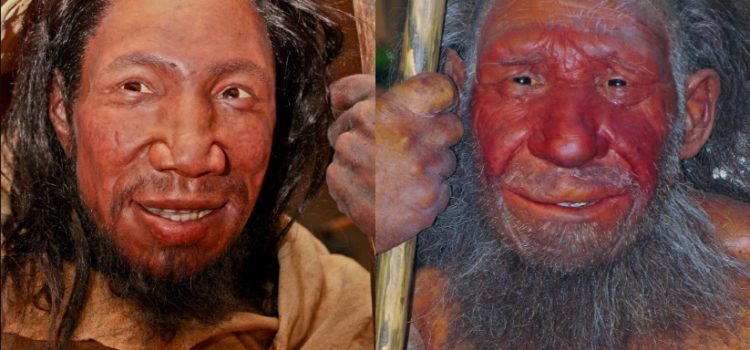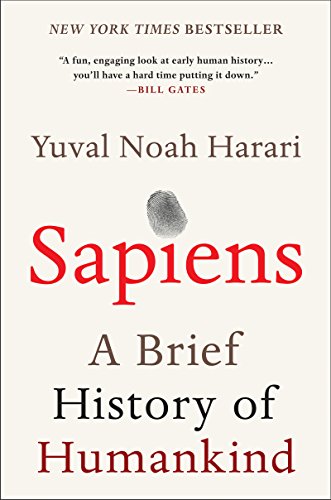

This article is an excerpt from the Shortform summary of "Sapiens: A Brief History of Humankind" by Yuval Noah Harari. Shortform has the world's best summaries of books you should be reading.
Like this article? Sign up for a free trial here .
What was the relationship between Homo sapiens and Neanderthals like? Did they get along? Did they mate? Did they go to war?
Homo Sapiens and Neanderthals had a complex relationship. They likely both interbred and fought wars with each other. Although Neanderthals were stronger and had bigger brains, Homo sapiens became the dominant human species.
We’ll cover how Homo sapiens came to dominate the animal kingdom and why the Neanderthals died out.
What Are Homo Sapiens and Neanderthals?
We think of our own species as the only humans, distinguished from and superior to every other species on earth. But when we, Homo sapiens, arrived on the scene 2.5 million years ago, we weren’t anything special. We existed in the middle of the food chain, as often prey as we were predators, and we weren’t even the only humans.
We tend to think of the evolution of humans as a linear progression from Homo erectus to Neanderthals to Homo sapiens, but at least six human species were alive when our own lived on earth, including Neanderthals
Homo neanderthalensis (“Man from the Neander Valley”): Also known as Neanderthals, these humans lived in western Asia and Europe. They were more muscular than we were and they had bigger brains than we did (or do today). We’ll see why the Neanderthal species died out, even though Neanderthals were superior to Sapiens in many ways.
Homo sapiens (“Wise Man”): Us. Our species of man also evolved in East Africa.
Both Homo sapiens and Neanderthals had large brains, but Neanderthal brains were bigger. Mammals that are 130 lbs typically have a brain that’s an average of 12 cubic inches. In contrast, the brains of early humans were 36 cubic inches. Today, our average brain size is 73-85 cubic inches, and the brains of Neanderthals were even bigger than ours.
Homo sapiens vs. Neanderthals: Last Man Standing
Early theories suggested that either A) Sapiens bred with other humans, like Neanderthals, merging the various human species, or that B) Sapiens were too genetically different from other species to procreate with them, meaning that all humans currently alive are pure sapiens.
Both of these theories are flawed. For years, Theory B had more archeological evidence to support it. But then the results of a 2010 project to map the Neanderthal genome showed that 1-4% of Middle Eastern and European DNA is Neanderthal DNA. Even if this theory is confirmed, it doesn’t suggest a “merger” of genes as in Theory A—such small percentages hardly suggest that two species of humans “merged.” What they do suggest is that a small amount of interbreeding happened, enough that we still harbor the DNA of another species, but it was rare.
The current evidence leaves us with two options to explain the disappearance of other humans. How did Homo sapiens beat out Neanderthals for dominance?
- Option #1: Due to their superior tools and collaboration skills, Homo sapiens were better hunters and gatherers than Neanderthals, and as they migrated to new geographic areas, they out-competed the human species that originally called that area home. Neanderthals, who were less resourceful, had trouble feeding themselves, and they slowly died out.
- Option #2: Genocide. Modern Sapiens have fought wars with others because of their differences in skin color, culture, and religious beliefs. Would Sapiens be any more tolerant of humans of an entirely different species? Or maybe it was their familiarity that motivated Sapiens to kill their fellow humans. Perhaps other humans, particularly the Neanderthals, were too similar to Sapiens. Neanderthals were a threat to a species that wanted to dominate the animal kingdom.
What made Sapiens the superior species that pushed other humans to extinction?
Homo Sapiens and Neanderthals: The Power of Gossip
One distinction between Homo sapiens and Neanderthals was the ability of the Sapiens language to convey gossip. We think of gossip as a bad thing, but using language to convey information about other people is a way to build trust. Trust is critical for social cooperation, and cooperation gives you an advantage in the struggle to survive and pass on your genes.
Even today, most of our communication is gossip, if we define gossip as talking about other people. If we hear from a friend that the banker down the street offers fair interest rates on mortgage loans, we feel comfortable doing business with that banker, even though he’s a stranger. On the flip side, if we hear that the banker is a fraud, we stay away from her. Gossip helps us avoid strangers who may cheat us or be undependable.
Neanderthals probably didn’t have the capability to gossip. Their language was equipped to talk about lions and bison, but not other people. When they couldn’t talk about others, they couldn’t assess the trustworthiness and dependability of strangers. That meant they could only cooperate with the people they knew intimately, family members and close locals.
Because an animal can only know so many other animals intimately, the lack of the ability to gossip kept Neanderthal groups small. Sapiens, on the other hand, could form groups of up to 150 people. They didn’t need to know every group member personally to trust them. In a battle, a small group of Neanderthals was no match for a group of 150 Sapiens.
Language Allowed Homo Sapiens to Out-compete the Neanderthals
The Neanderthals were perhaps the human species, other than Sapiens, most likely to survive. As we’ve learned, they had strong bodies and large brains and were superior to Sapiens in both these qualities.
But in the struggle for dominance and, ultimately, survival, they were no match for Sapiens. The Cognitive Revolution, and the language, fictions, and cooperative skills that came with it, gave Sapiens a leg up in trade and hunting.
Homo Sapiens and Neanderthal Trade
Archeologists find shells from distant coasts in Sapiens settlements, showing that Sapiens must have traveled far and been good navigators. Both navigation and interaction with strangers necessitates good communication skills, cooperation, and shared myths. For instance, you need to be able to trust strangers to trade with them. Foreign Sapiens traders probably engendered this trust by calling upon a shared mythical ancestor or god. They probably also used the trust that comes from believing in the same myths to trade information, widening their network of knowledge.
There’s no evidence that Neanderthals traded. They made their tools from local materials. In fact, no other animals trade. Sapiens had a huge advantage here.
Homo Sapiens and Neanderthal Hunting
While Neanderthals hunted by themselves or in small family groups, Sapiens hunted in large, cooperative groups. Because there were so many of them, and they knew how to communicate effectively, Sapiens could surround an entire herd of wild horses, chase them into a tight spot where they were trapped, and slaughter them.
If Homo sapiens and Neanderthals were living in the same area and competing for the same food sources, Sapiens usually won.
———End of Preview———

Like what you just read? Read the rest of the world's best summary of "Sapiens" at Shortform . Learn the book's critical concepts in 20 minutes or less .
Here's what you'll find in our full Sapiens summary :
- How Sapiens outlived and outlasted the 8+ other human-like species on Earth
- The 3 critical revolutions in human existence that led to our domination of the planet
- How much of what powers our world today is really just a shared mass delusion
- What the future of humanity might look like







According to our DNA test my sister and I are 2 – 4% Neanderthal and I love it, we are crossed with a much different species.